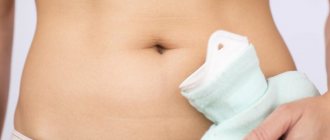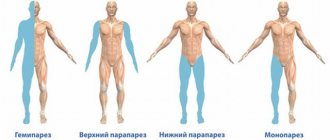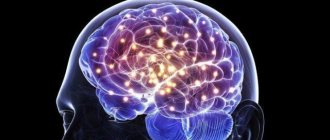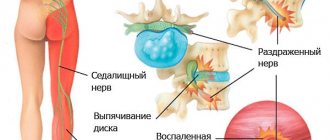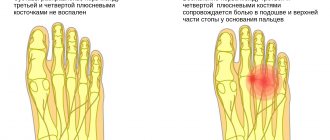NEUROGENIC BLADDER DYSFUNCTION (NDBD) is a collective concept that unites a large group of disorders of its reservoir and evacuation functions, which develop as a result of lesions of the nervous system at various levels - from the cerebral cortex to the bladder. In more accessible language, the main reason for the onset of the development of such an unpleasant disease is the disruption of the functioning of the nervous system, which is responsible for the process of urine excretion.
The process of normal bladder emptying is carried out by multi-level regulation, in which a large number of nerves are involved. If at this stage some kind of failure occurs - severe stress experienced, serious diseases of the brain and spinal cord, injuries, infectious diseases, disturbances in the innervation of the sphincter of the bladder itself - this can serve as a trigger for this disease. Most often, the main reason that provokes the development of such a disease in adults will be serious injury, as well as diseases associated with the spinal cord. In addition to the above reasons, in children the formation of the disease can also occur as a result of a malformation of the urinary tract or spinal cord, and sometimes as a result of a serious birth injury.
The most severe disorders of bladder function are observed with congenital malformations (myeldysplasia), injuries, tumors and inflammatory-degenerative diseases of the spinal cord, i.e. with partial or complete separation of the spinal, supraspinal centers and the bladder.
However, in practical work, a urologist and nephrologist is much more often faced with a situation where there is no anatomical defect in the nervous and urinary systems, and disorders of the act of urination and urodynamics are caused by a delay in the maturation of the higher centers of autonomic regulation of the lower urinary tract.
The prevalence of NDMP in childhood is quite high – 10%-15%. Among patients with nephrological and urological profiles, it reaches 60-75%.
Standard indicators of the daily rhythm of spontaneous urination
| Floor | Age | Urinary frequency | Effective bladder volume, ml | |
| minimum | maximum | |||
| Girls | 4–7 | 6 | 60–70 | 120–260 |
| 8–11 | 5 | 80–100 | 220–250 | |
| 12–14 | 4 | 100–130 | 230–300 | |
| Boys | 4–7 | 5 | 70–80 | 120–160 |
| 8–11 | 5 | 80–100 | 250–300 | |
| 12–14 | 4 | 100–110 | 300–400 | |
Overactive type of neurogenic bladder dysfunction. Urination can occur at any time and often in an inconvenient place, since neurogenic bladder dysfunction makes it impossible to voluntarily control the act of urination. A neurogenic bladder with an overactive detrusor virtually eliminates the possibility of urine accumulation, and therefore the patient wants to go to the toilet at very short intervals. Symptoms of the hyperactive type of the disease are:
Frequent urge with small amounts of urine;
Urge incontinence (instantaneous leakage of urine with a strong sudden urge);
· overstrain of the pelvic floor muscles (up to the return flow of urine through the ureter);
· Unnatural postures of the child (crossing legs, squatting)
Hypoactive type of neurogenic bladder dysfunction. Hypoactivity is characterized by insufficient reflex contractions of the muscles of the lower urinary tract or absence of contractions (hyporeflexia, detrusor areflexia). A hypoactive neurogenic bladder is characterized by the absence of normal urination, even in the presence of a large amount of urine in the body (more than 500 - 1000 - 1500 ml). Patients complain of a lack of urge to urinate. Normal emptying does not occur, and incontinence develops from bladder overflow. Symptoms of the hypoactive type of the disease are:
· lack of urge to urinate;
Rare urination with large volumes of urine;
· incomplete emptying of the bladder (feeling of fullness);
· regularly sluggish stream of urine;
Diagnosis of neurogenic bladder
Anamnesis collection. Interviewing the patient and his relatives about the manifestations of the disease is necessary in order to find out the individual characteristics of the disease in a particular patient. The patient is asked to keep a diary of urination for several days. The diary records the amount of fluid you drink and the time you visit the toilet. When treatment for neurogenic bladder is carried out in children, their parents keep a diary. They also find out the medical history of the birth of the father and mother and calculate the likelihood of inheriting the disease.
Analysis for infections. Neurogenic bladder is often accompanied by symptoms that resemble those of inflammatory diseases of the genitourinary system, and therefore the patient is thoroughly examined for the presence of infections. The analysis is carried out by laboratory methods using various functional tests (general analysis of urine and blood, biochemical blood test, Zimnitsky test, Nechiporenko test, etc.).
Examination for anatomical abnormalities. To search for abnormalities in the anatomical structure of the urinary tract, organs are examined using ultrasound, urography, cystourethrography, MRI, cystoscopy and other methods.
Neurogenic bladder can be diagnosed only by completely excluding the inflammatory process. Neurogenic dysfunction of the bladder with abnormalities in the structure is most reliably diagnosed using ultrasound, which provides visual information about the shape, structure and size of this organ.
Neurological examination. Only after it has been established that there are no infectious diseases of the urinary system can a neurological examination be performed to confidently diagnose a neurogenic bladder. For this purpose, various techniques are used, including electroencephalography (EEG), computed tomography (CT), magnetic resonance imaging of the brain (MRI) and others.
Sometimes, even after all diagnostic measures, it is not possible to establish the cause of neurogenic bladder dysfunction.
About the disease
Overactive bladder syndrome is a dysfunction of the organ when there is an uncontrollable urge to go to the toilet. This pathology is observed most often in women, but men are also susceptible to the disease. If you notice signs and symptoms of a pathological condition, you must immediately visit a specialist who will diagnose and prescribe appropriate medication.
A doctor should be consulted if the patient experiences incontinence, a frequent and unpleasant desire to visit the toilet, or a constant feeling of a full bladder. With timely treatment, the disease can be cured, but if left untreated, the problem worsens, leading to significant complications and associated pathologies. With the disease, the patient feels significant discomfort and limited movement, since he needs to constantly visit the toilet.
Normally, the standard number of urinations per day is up to 8 times with a norm of 2 liters of urine, depending on the volume of fluid consumed. In the presence of a pathological syndrome, the volume of urine remains the same, but the patient more often feels the desire to urinate. The disease develops due to a sharp increase in the conductivity of impulses in the nerve endings of the bladder. Therefore, even the slightest influence on the nerve endings provokes muscle contraction, then the person feels the urge to urinate.
Treatment of neurogenic bladder
· Behavioral adaptation - formation of a urination regime, correction of lifestyle.
· Urination due to abdominal tension, or by pressing on the lower abdomen.
· Formation of urination due to stimulation of the skin in the back area (the so-called trigger mechanism of urination).
· Therapeutic exercise – strengthening the pelvic floor muscles.
· Therapy based on the principle of biological feedback, when the patient, using special devices, urinates independently at a certain moment.
· Individual drug therapy taking into account hypo/hyperactivity (increased or decreased tone) of the bladder - drugs are used that either relax the closure apparatus of the bladder or increase the tone of the bladder wall, sometimes their combined use is used.
· Drugs that affect the functioning of the nervous system.
· Physiotherapeutic treatment (for example: electrical stimulation of the perineum, sacrum, intravesical electrical stimulation, ultrasound, electrosleep, regional hyperthermia (heating) of the bladder, electrophoresis of drugs).
· Intermittent catheterization of the bladder.
· Surgical treatment directly depends on the shape of the neurogenic bladder.
Causes
This condition can be provoked by neurogenic or other causes that require timely treatment. The first category includes the following:
- the main reason is brain disorders and pathologies (sclerosis, encephalitis, malignant tumors, Alzheimer's disease);
- diabetes;
- alcohol abuse;
- traumatic brain injury, stroke;
- congenital pathologies.
Other reasons include age-related changes, concomitant pathologies of the genitourinary organs, anatomical structure of organs, and hormonal imbalances. Also, patients who experience stress and depression, disorders, intestinal pathology with irritated mucosa, may suffer from bladder diseases, for which drug treatment is inevitable.
With this disease, the patient experiences general discomfort as sleep disorders, depressive states, and various urinary tract infections develop. Therefore, if even the slightest symptoms are detected, you need to visit a qualified specialist who will prescribe effective medications depending on the causes of the pathology.
Complications and consequences
Most congenital diseases of the nervous system in children affect the quality of urination, but neurological symptoms often come first. Complications of impaired urination occur faster than in adults.
- Mental disorders (anxiety, depression, sleep disturbances) that reduce the level of quality of life.
- With inadequate treatment, the disease can lead to serious consequences for the patient’s health - the development of chronic cystitis (inflammation of the bladder), vesicoureteral reflux (reflux of urine from the bladder back into the ureters and kidneys, followed by their atrophy and the development of chronic renal failure), pyelonephritis ( microbial inflammatory kidney damage), etc.
How does cystitis manifest in a child: main symptoms
The child has ways to protect himself from infection in the urinary tract. For example, urine leaves your baby's kidneys through the ureters and into the bladder. Bacteria that enter the urinary tract are expelled during urination. This one-way flow of urine prevents bacteria from infecting the urinary tract. Sometimes the body's defenses weaken, and bacteria ascend into the bladder, causing inflammation. If your child has symptoms of cystitis or has a fever for no clear reason, contact your doctor within 24 hours.
Cystitis often occurs in children, especially in girls (which is due to the structural features of the urinary tract). Immediate treatment of cystitis in a child can prevent kidney damage (pyelonephritis). It can develop due to an infection that spreads up one or both ureters. Kidney infections are very painful, can be dangerous and cause serious health problems, so it is best to start treatment as early as possible.
Signs of the disease in infants and children under one year of age:
- decreased appetite or complete refusal to eat;
- restlessness that increases when the child urinates;
- crying, nervous excitement or, conversely, lethargy and weakness;
- increased body temperature, up to fever;
- spasm of the urethral sphincter from the outside, urinary retention due to a developed reflex;
- change in urine: cloudiness, sediment, flakes, repulsive odor.
In older children, the symptoms are quite bright and pronounced. The main symptoms are pain in the lower abdomen, back or side, as well as an urgent need to urinate or frequent trips to the toilet. Some toddlers who are already potty trained or toileting lose control of their bladder and may wet the bed. Parents may also see drops of blood in the urine and/or pink colored urine.
It is important to know how cystitis manifests itself in young children. Babies may have more general symptoms such as fussiness, decreased appetite, crying, fussiness on the potty, or fever. Other symptoms of cystitis include:
- burning or pain when emptying the bladder;
- foul-smelling or cloudy urine;
- a sharp urge to urinate, and then the release of only a few drops of urine;
- high temperature;
- nausea or vomiting;
- diarrhea.
How to determine acute cystitis?
The disease manifests itself quickly, with a rapid increase in symptoms:
- the urge to empty your bladder every 20 minutes or more often;
- pain above the pubis, radiating to the perineum and intensifying when palpating the abdomen and even when the bladder is not full;
- difficulty passing urine, accompanied by stinging and pain;
- urinary incontinence;
- a few drops of blood after urinating;
- urge that does not lead to urination.
Chronic form of the disease
A secondary disease, which is characterized by a similar clinical picture during periods of exacerbation. Children experience discomfort in the pubic area, suffer from incontinence and noticeably increased frequency of urination. Source: Pigareva, N.A. Tsap Chronic cystitis in children: modern view on etiology, pathogenesis, clinical picture, diagnosis and treatment (literature review) // Russian Bulletin, 2012, vol. II, no. 2, pp. 32-37
Which doctor should I contact?
For treatment of a disease such as overactive bladder, it is necessary to contact a urologist who can conduct qualified diagnostics and establish a competent diagnosis, taking into account the causes and symptoms of the disease that the patient has. It is wrong to contact a gynecologist with this disease, since this specialist can only indirectly treat the pathology, but will not be able to prescribe competent treatment.
It is often necessary to initially visit a therapist, who will refer you to a specialist who treats a specific problem. Patients can undergo examination at the JSC Meditsina clinic in Moscow, where qualified specialists work to help cope with problems of varying severity. On the clinic’s website, visitors can get acquainted with the doctors who see them, their certificates and specialization.
Treatment: modern techniques
Several treatment approaches have been developed. The chosen technique depends on how severe the symptoms are and the stage of the disease.
For mild symptoms, exercises can be used as prevention and treatment to train the bladder muscles so that the patient can control urge and urination. The main goal of such exercises is to go to the toilet less often due to the fact that the muscles will be able to hold an increased amount of urine. The training includes two stages: going to the toilet if necessary in the morning and practicing urinary control throughout the day.
At the first stage of treatment, the patient learns to control urges and tries to visit the toilet at increased intervals. So, if previously the patient went to the toilet every half hour, the time gradually increases to 45 minutes or an hour. If you have a strong and uncontrollable urge to urinate when your bladder is empty, you can perform Kegel exercises by contracting your muscles. It is necessary to gradually increase the intervals between urinations. The norm is to visit the toilet 4-5 times during the day and once at night.
Conservative treatment
Treatment of an overactive bladder is carried out by prescribing medications that help relax the muscles in the bladder. These medications are prescribed by the doctor after diagnosis on an individual basis, depending on the reasons that caused the unhealthy condition and the symptoms that the patient complains about. The following techniques are used:
- For women during menopause, when observing atrophy of the vaginal mucosa and incontinence, the most effective treatment method is considered to be local use of vaginal estrogens in the form of cream or vaginal suppositories. If the technique is ineffective, it can be treated with injections of botulinum toxin type A directly into the overactive bladder;
- stimulation with electrodes of nerve endings that are responsible for relaxation of the organ. Electrical stimulation is performed through skin electrodes or by inserting a needle into a nerve in the ankle. This procedure does not cause discomfort, but makes it possible to significantly reduce the symptoms of an overactive bladder;
- surgical intervention - augmentation cystoplasty is used only in extreme cases, when an overactive bladder bothers the patient excessively, urinary incontinence is constantly observed, which interferes with the patient’s normal life.
Advantages of treatment at the clinic of JSC "Medicine"
Treatment in the hospital of the clinic of JSC "Medicine" takes place in comfortable conditions - patients are provided with rooms with all amenities.
The competitive advantage that the clinic has is cooperation with insurance companies. The modern clinic provides medical services at the highest professional level, providing effective treatment for patients even with complex forms of the disease.
Treatment and diagnostics are carried out by qualified specialists of our clinic using modern equipment, using effective medications, in order to completely relieve patients from pain and discomfort.
Contraindications for illness
When treating the syndrome it is necessary:
- stop eating citrus fruits, pineapples, chocolate, sweets, spicy and sour foods, dairy products, since these products cause irritation to the mucous membrane of the genitourinary system;
- avoid excessive consumption of water and any liquid in general; excessive reduction of the daily water intake is also contraindicated;
- Minimize the consumption of alcohol and energy drinks.
By following these recommendations, you can cope with hyperactivity syndrome, reduce pain to a minimum and increase the effectiveness of drug treatment.
